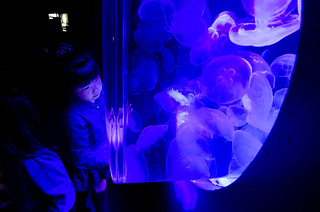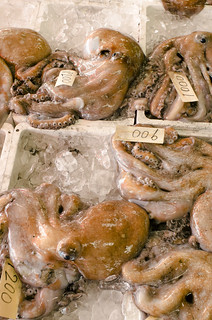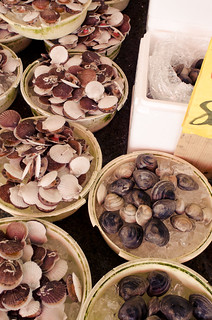While on a road trip last week, while experimenting with my Japanese vocabulary, I learned a new saying: "猫を被る"
1 "Neko o kaburu," which literally translates into, "he wears a cat on his head," or more simply, "to put on the cat."
1. This, apparently, is a disapproving statement implicating someone who is normally wild and outrageous of pretending to be polite and mild-mannered to impress or placate the expectations of someone who needs to be impressed.And though Japan may seem to have quite a favorable relationship with the Felis catus
2 With the 招き猫 (maneki-neko) and everything.
2, this saying harkens back to a time when Japanese people were more suspicious of their fine feline friends, much like it's Western/European counterparts.Early in Japanese folklore it was believed that cats were capable of transforming into monsters. And though my mother could attest to that possibility still being quite true with even modern house cats, there were a fair number of evil-doings in such stories attributed to the " 化け猫," or the "Goblin Cat," a youkai (妖怪) that was known to terrorize households with their supernatural abilities
3 Wikipedia conveniently lists common traits of the type of cat that qualifies for such a Pokemon-esque bake-evolution, and, likewise, we should all be a little more wary of Milo.
3. Among the bake-nekos more illustrious powers are walking on its hind legs, menacing and eating sleeping humans, zombification and shapeshifting, in addition to flying and talking. The bake-neko (and all cats who have the potential for promotion to bake-neko status) are revered/feared akin to the kitsune (狐) and tanuki (狸) (which are responsible for "moshi-moshi" and other more curious Japanese habits).And so, according to folklore, cats were(/are) monsters capable of transforming into more terrible monsters capable of terrorizing families for generations through deception and burning things (+/- zombies). Thusly, someone who "puts on a cat" (or wears a cat-mask, I suppose) is someone who is putting on an air of placidness that hides a terrible potential for going wild. Sort of like a "wolf in sheep's clothing."
Similarly, other resources suggest a more situational "wearing of the cat" in "借りてきた猫," or "borrowing a cat," which suggests that the person is only behaving well mannered contrary to his nature in circumstances and situations that are unfamiliar and uncomfortable. So pretty much like everybody in Japan.
Other more interesting "cat" sayings are "猫の額" ("a cat's forehead," meaning "a tiny space"), "猫の子一匹いない" ("not even a kitten around," which sounds like "nothing was stirring, not even a mouse"), "猫の手も借りたい" ("to want to borrow a cat's paw," or to be so busy you'll even take a cat's assistance), and "猫も杓子も" ("cats and ladies," which is akin to "every Tom, Dick and Harry").

All that to say I went to Ibaraki (茨城県) last week as a farewell-trip of sorts for one of the teachers who has always taken special interest in making sure the TSCA ALTs are feeling at home. It turns out that at least every 10 years a teacher has to change schools (3 for administrators). This is her 10th year so she'll be moving to a different school at the start of the new academic year next week so a few of us went out to have some fun: one last fling of sorts.
We went to Ooarai (大洗), ate at this really famous kaitenzushi place and followed that up with a trip to their also famous aquarium (the irony is apparently lost on the Japanese people).




